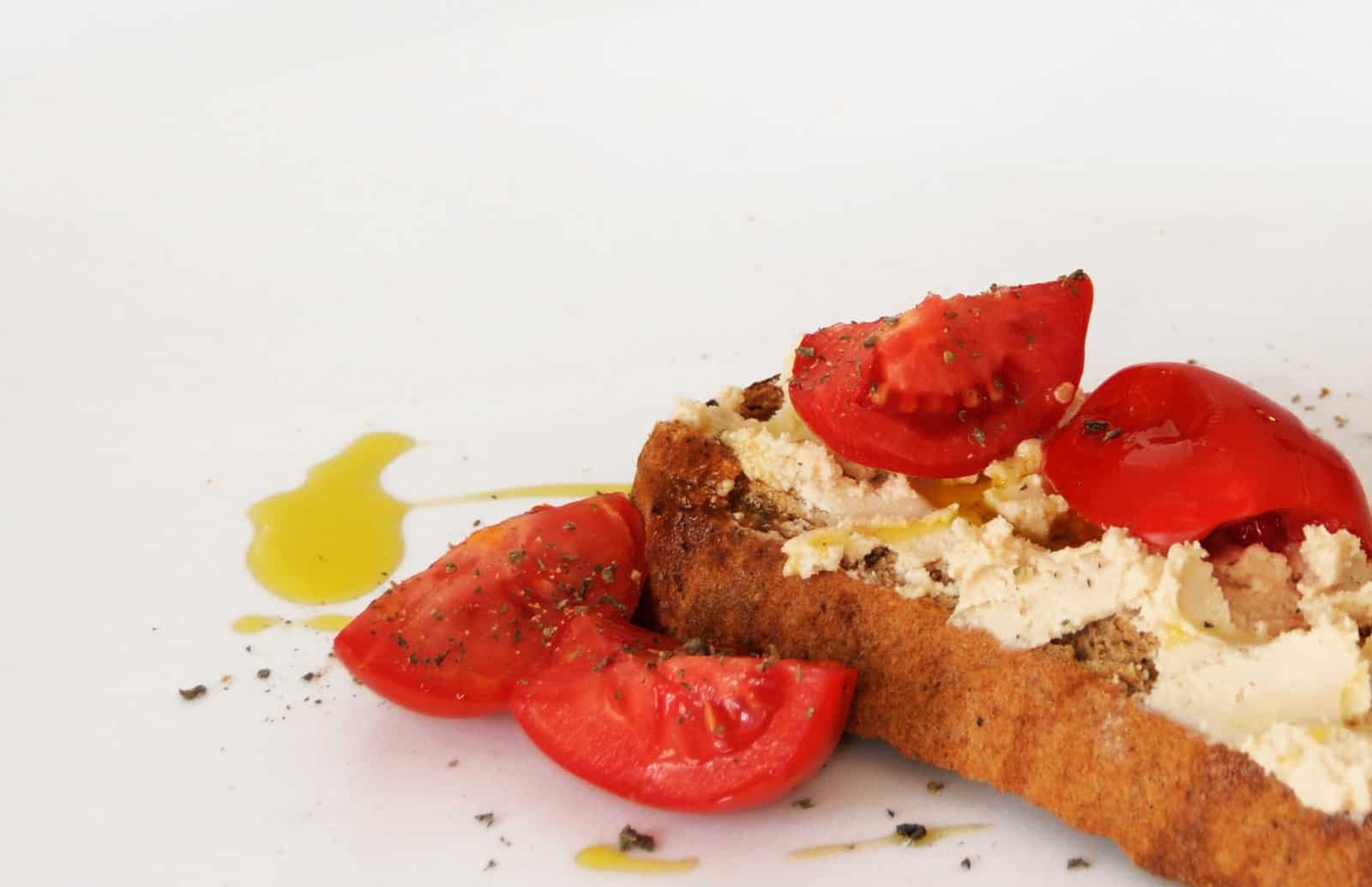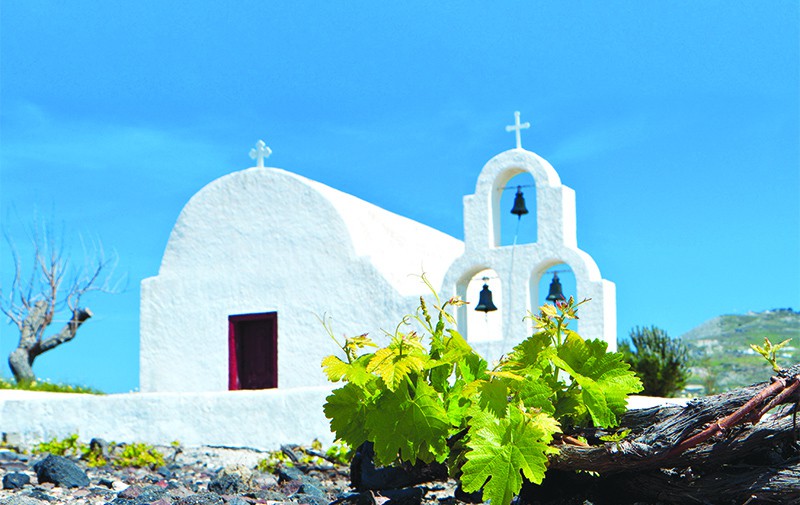
Growing up in a lively neighborhood of Greek immigrants in New York, I recall the large brine-filled wooden barrels of feta being delivered to the local Greek deli.
Feta: The smell, taste, and presence it commanded in the fridge, on the table, in the homemade spinach pies, and atop salads was a daily homage to Sparta and the mountain village my father had left in search of the American Dream.
Living in Greece over the past several years and working and traversing the many islands and mountain villages, I have come to appreciate the country’s rich tradition of cheesemaking. Here, the topography of the land and its climatic and geographical variances makes each cheese distinct.
You can discover traditional cheesemaking culture almost anywhere, from mainland Greece to the many islands (Crete, the North and South Aegean, the Ionian, the Dodecanese). In most regions, the majority of the cheeses are made out of goat’s or sheep’s milk or a combination of the two, although other areas use cow’s milk too.
The specific-to-the-region seasonal flora and fauna is a contributing factor to the differences in flavor. Currently, Greece has 21 cheeses with Protected Designation of Origin (P.D.O.) status, the European Union’s certification of a product’s authenticity based on specific guidelines and criteria.
While some Greek cheese varieties are available abroad, the best way to truly experience the bounty of delightful cheeses is to visit Greece. Here’s a sampler of Greek cheeses you need to try.
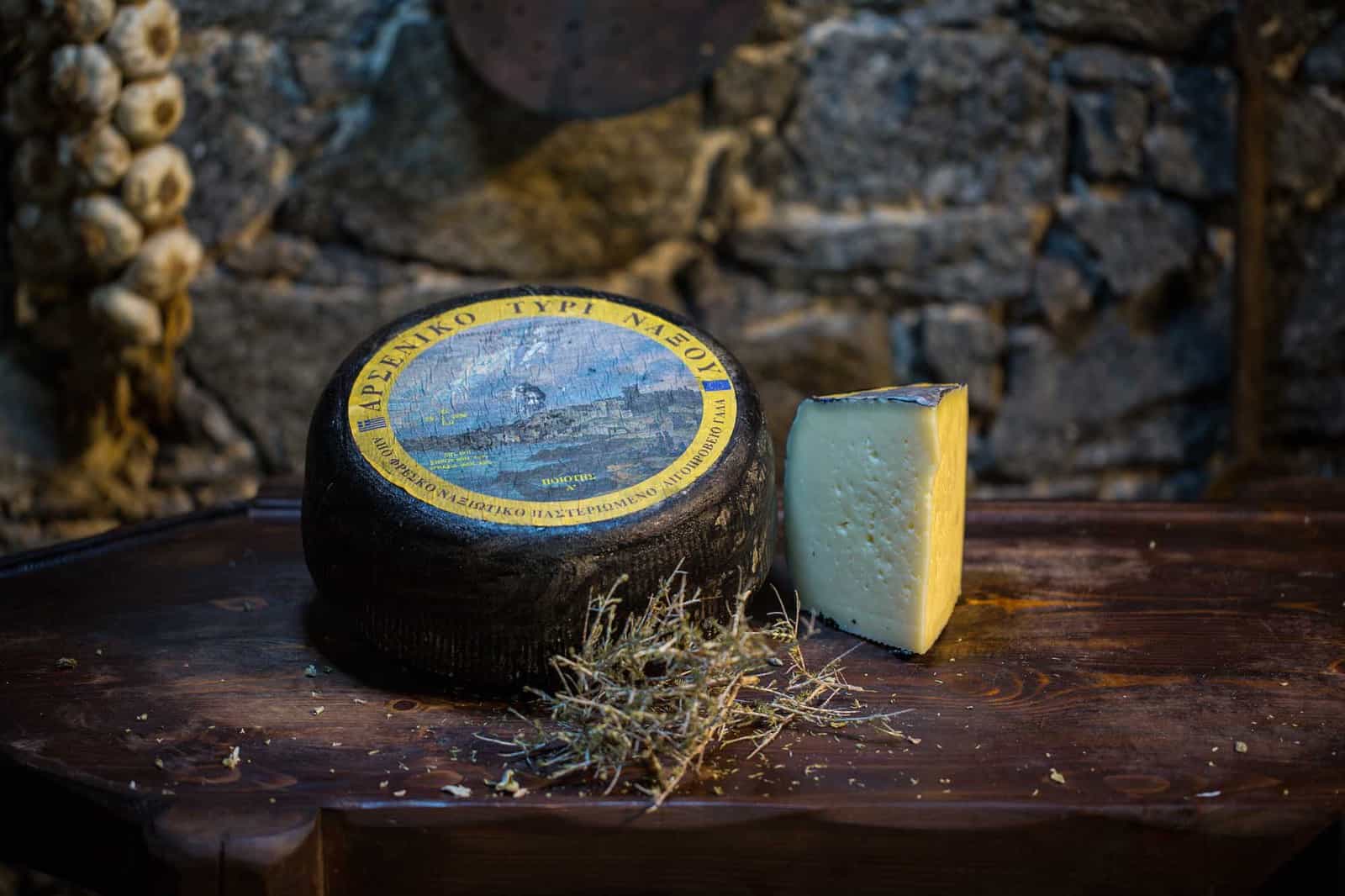
Photo courtesy of Municipality Of Naxos And Small Cyclades
1. Arseniko Naxou: Strong & Mature
This mature, yellow table cheese is native to fertile Naxos, the largest of the Cycladic islands and home to the Temple of Demeter, built in honor of the goddess of agriculture. Arseniko is made from cow’s and/or sheep’s and goat’s milk. One of the first traditional cheeses to be produced on Naxos, it gets its name from the Greek word for masculine because of its strong flavor. Its rich piquant flavor has been said to “wow” first-time tasters with its unexpected robustness.
2. Graviera: Greece’s Gruyère
This yellow, hard, buttery, and aromatic table cheese—with a gamut of differences in textures and flavors, ranging from sweet and savory to the more piquant—is a popular variety in Greece. Although many regions produce their own graviera—a cheese plate would be remiss without it—three have P.D.O. certification: Graviera Kritis, produced on Crete, evokes a mild, nutty, buttery flavor, while the aged variety can be very sharp and peppery; Graviera Naxou, produced on Naxos with cow’s milk or with a mix of (up to 20%) sheep and/or goat’s milk, as opposed to the sheep/goat variety of Crete’s and Agrafon’s graviera, is sweet and buttery; while Graviera Agrafon, from the mountainous area of Central Greece, has a milder taste.
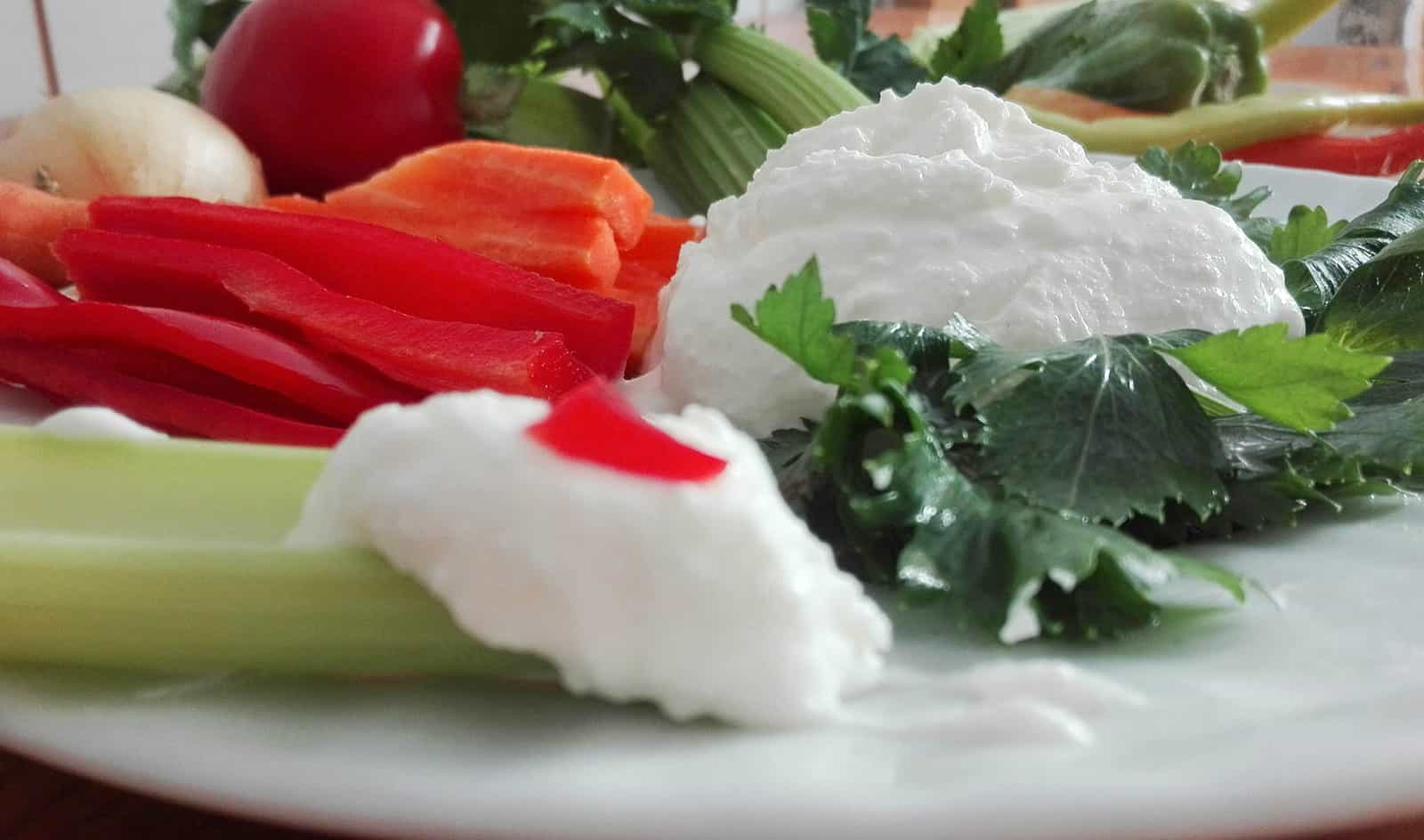
Photo Credit A.Vorillas
3. Katiki Domokou: Light & Tasty
Summer in Greece means bikini season! But cheese lovers don’t fret. Exclusive to the region of Domokou in Central Greece, Katiki Domokou is a popular choice among dieters due to its low fat content. Made from a mixture of goat’s and sheep’s milk, this fresh soft white cheese has a distinct and pleasantly tart taste. It’s traditionally served as a spreadable cheese for bread and crackers, a dip for vegetables, crumbled onto salads, and used in sweets like cheesecake.

Photo Credit A.Vorillas
4. Kefalograviera: Aromatic & Grateable
Kefalograviera, a relative newcomer in the vast history of Greek cheeses, was founded in the late 1960s at the Dodoni dairy factory in Ioannina. It has since enjoyed a rise in popularity at home and abroad. Made of sheep’s milk or with a mix of sheep’s and goat’s milk in Western Macedonia, Epirus, and Central Greece, it is considered a mix between kefalotyri, the widely produced salty, slightly piquant cheese, and the buttery, aromatic graviera, hence its name. The result is a balance of flavors which can vary from the mild, sweet, and buttery to spicy. A hard, mature, and slightly salty cheese, it’s often used in baked dishes, grated for pasta and served with red wine, or fried as saganaki, the popular Greek méze.
5. Kopanisti: Intensely Pungent
Exclusive to the Cycladic islands, this traditional, spreadable, cheese is in a category of its own, thanks to its distinct piquant taste. This is especially true for the variety found on the island of Mykonos because of its intensely sharp, pungent taste and aroma. Made from cow’s, sheep’s, or goat’s milk, or a mixture of them, it is recommended eaten in small amounts because of its robust and naturally peppery and spicy flavor. In Mykonos, it is served as méze with moistened rusks of barley, fresh tomatoes, olive oil, and oregano to balance its flavors. Kopanisti, a name derived, quite possibly, from the kneading process in its production, is also found on the Cycladic islands of Tinos, Syros, and Naxos.

Photo courtesy of Giannou Dairy Products Factory
6. Krasotiri Ko: Bathed in Wine
The birthplace of Hippocrates, the island of Kos is located in the Dodecanese group of islands in the South Aegean. It’s also home to the traditional Krasotiri Ko (also known as Tiri tis Possias). An exclusive to the island “wine” cheese (krasi is Greek for wine), it is matured in the dregs of wine that is known locally as possia.
Legend has it that in ancient times, when Kos had a shortage of olive oil, which was used to preserve the cheese, residents turned to possia to mature the soft, white sheep’s and/or goat’s milk cheese, giving it its characteristic bronze outer layer. Served with everything from salad to fruit to Greek coffee, it’s highly recommended paired with watermelon in the summer.
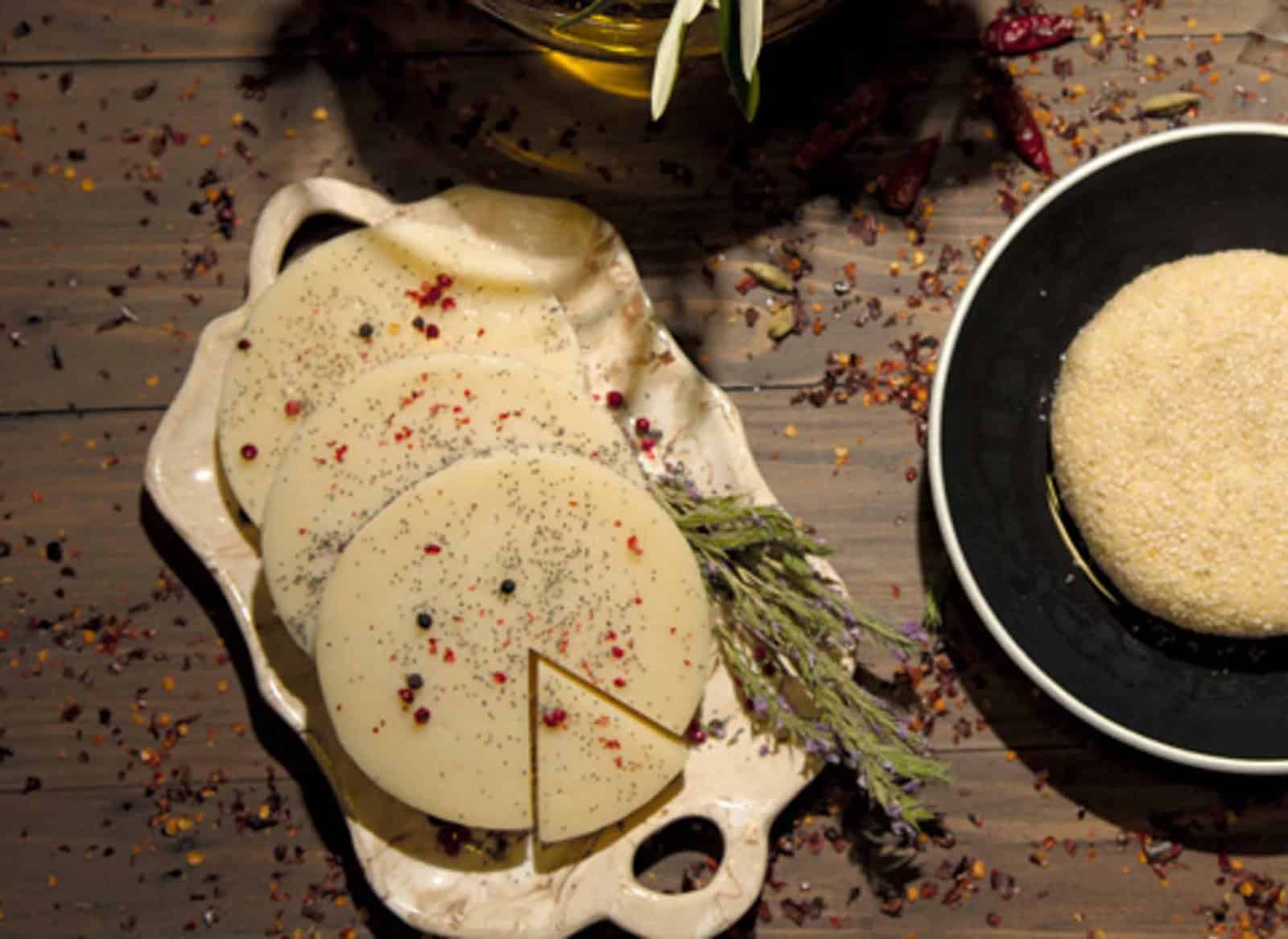
Photo courtesy of Lesvos Dairy S.A.
7. Ladotyri Mytilini: An Ancient Favorite
Ladotyri Mytilinis is a hard yellow-white cheese with a subtle savory taste and aroma. Made of sheep’s milk or with a mix of sheep’s and goat’s milk, it is exclusive to the island of Mytilini, also known as Lesvos, in the Northern Aegean.
Ladotyri is preserved in olive oil, hence its name: from ladi, which means oil, and tyri, which means cheese. A traditional cheese produced since ancient times, it is served at restaurants and tavernas as saganaki and often accompanied by the island’s distinct anise-flavored drink, ouzo.

Photo Credit A.Vorillas
8. Manouri: Soft & Milky
On the heavier, creamier side is Manouri, a fresh, soft, milky white and mildly sweet whey cheese from Macedonia and Thessaly that has been produced for centuries. Traditionally produced from sheep’s and goat’s milk and usually cylindrical in shape, Manouri is enjoyed grilled, with pasta, or fresh with a drizzle of honey and/or seasonal fruits. Its smooth and creamy texture gives it a richness of flavor and a versatility for both sweet and savory dishes.
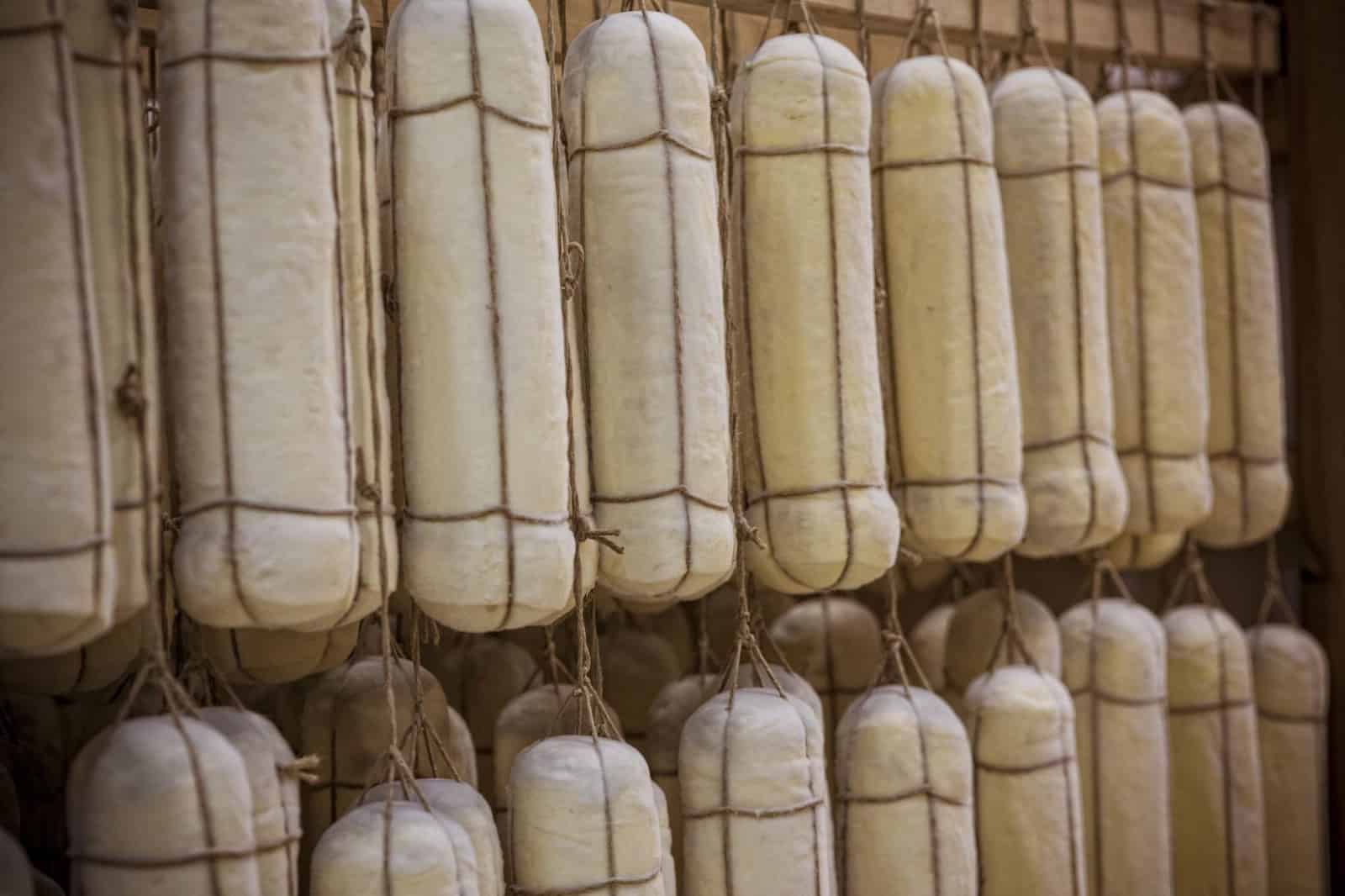
Photo courtesy of Grand Forest Metsovo
9. Metsovone: Smooth and Smoked
Metsovone, a semi-hard, smoked cheese that is cylindrical in shape and smooth in texture, derives its name from Metsovo, the picturesque mountain village in northern Greece’s Epirus region. This distinguished cheese—made of 80% cow’s milk and 20% goat’s milk, using the pasta filata technique—exudes an intense smoked aroma and flavor. The timber town owes its distinct cheesemaking craftsmanship to great Greek benefactor and Metsovite, Evangelos Averoff, who founded the Tossizza Cheese Factory, as well as the Katogi Averoff Winery.
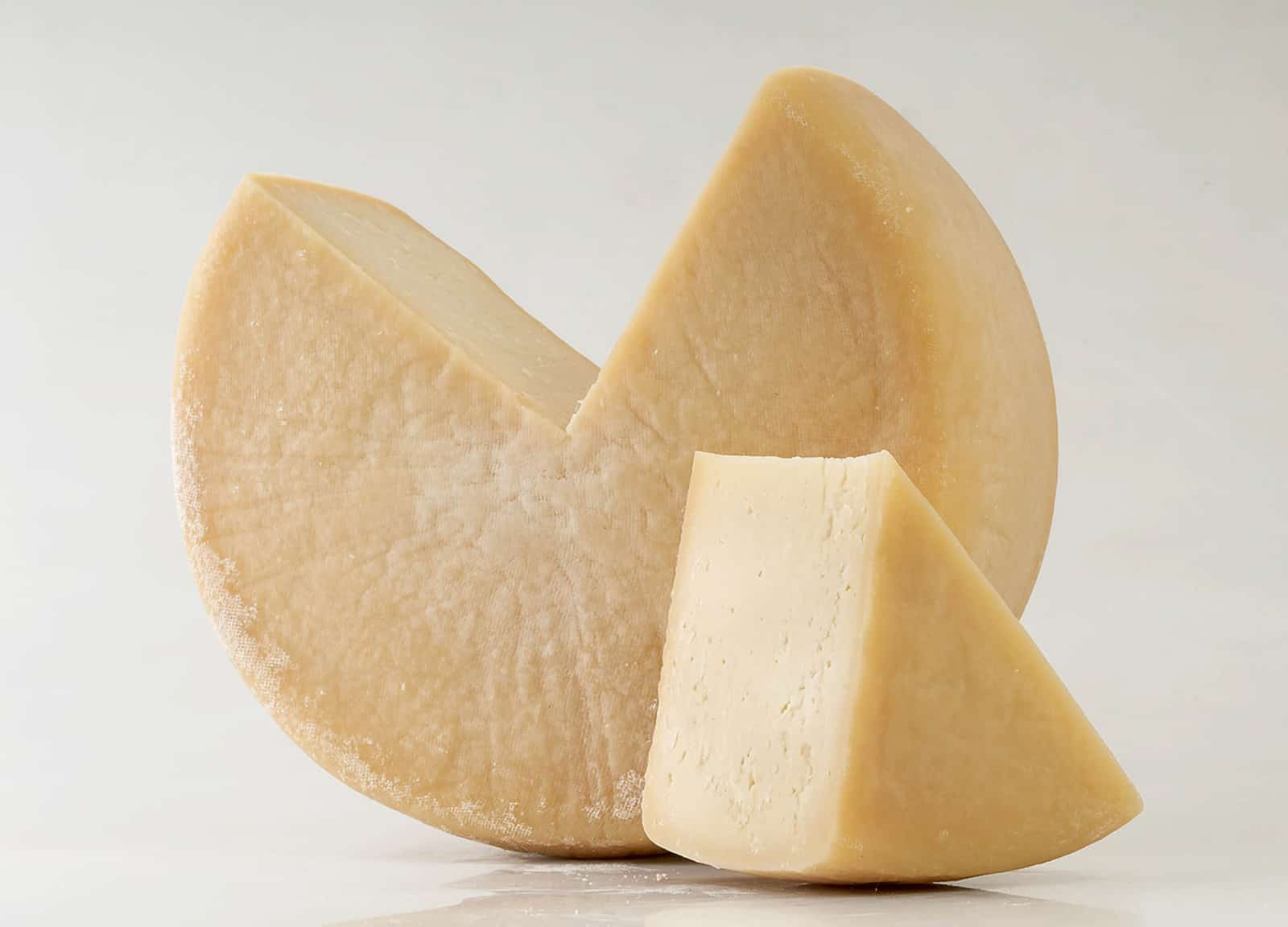
Photo courtesy of Municipality Of Syros-Ermoupolis.
10. San Michali: Splurge & Indulge
Exclusive to the Cycladic island of Syros, San Michali sounds fancy—because it is. Considered a premium choice, San Michali is for cheese lovers who opt to splurge to indulge in its abundant aroma and full-bodied taste. The white-yellow cheese, which is salty, spicy, and hard yet subtly moist, is made from cow’s milk. The cheese gets its name from the area and charming chapel of San Michali, located in the northern part of the island.
For more information on Greece:
www.visitgreece.gr
www.discovergreece.com
www.agrocrete.com



